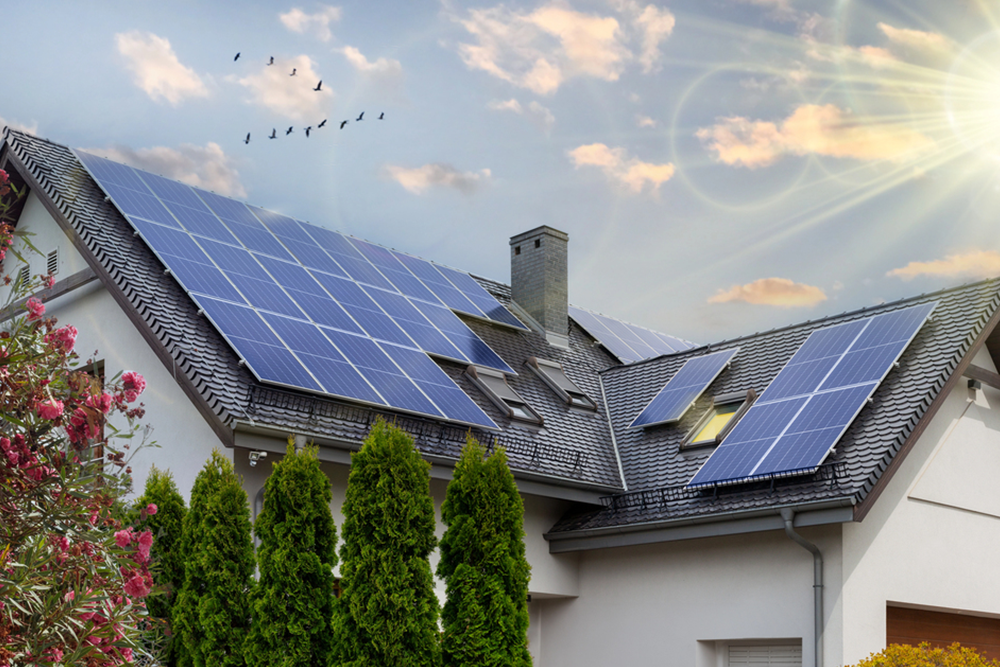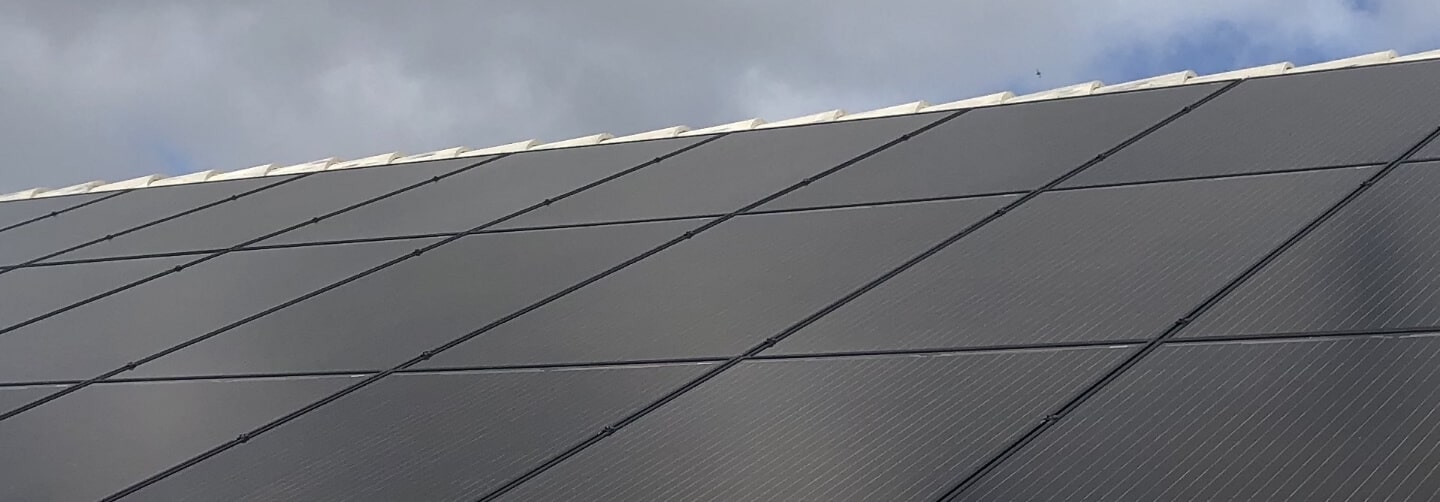Do Solar Panels Really Need Direct Sunlight To Work?

A clear sky with bright sunshine may seem like the only condition for solar panels to work well. Many people ask, “Do solar panels need direct sunlight to produce energy?” The answer is not as simple as yes or no. Solar panels can still function in less-than-perfect lighting, but the efficiency changes. Understanding how they capture light and turn it into usable power helps homeowners make better choices about installation and performance expectations.
How Solar Panels Generate Electricity
Solar panels generate electricity using the photovoltaic effect. Within each panel are numerous solar cells, most often built from silicon. When sunlight hits the cells, particles of light known as photons energize the material, causing electrons to break free. As these electrons flow, they produce an electric current.
While direct sunlight delivers the highest amount of energy, panels can also use diffused or reflected light. This means that even when the sky is overcast, the cells still receive photons, though in smaller amounts.
If you want to learn more about the types of systems available and how they work in different settings, check the solar services offered by experts in the field.
The Role of Direct Sunlight in Efficiency
Direct sunlight delivers the maximum photon energy to solar cells. This high concentration allows panels to reach their peak output. On a perfectly sunny day, a system can generate more electricity than needed at that moment, storing the extra in batteries or sending it back to the grid.
However, losing direct sunlight does not mean losing all production. On cloudy days, light still scatters in the atmosphere and reaches the panels. Output will drop, sometimes to around 10–25 percent of peak capacity, depending on cloud thickness.
This variation means that system design often includes a buffer, such as larger panel arrays or storage systems, to handle days with lower sunlight.
Performance on Cloudy and Rainy Days
One common misconception is that solar panels stop working when it is cloudy or raining. In reality, they still produce power, just at a lower rate. Thin clouds reduce efficiency slightly, while heavy clouds cause more noticeable drops.
Interestingly, rain can benefit long-term performance. Rainwater naturally washes away dust, pollen, and dirt from the surface of panels, improving light absorption once the sun returns.
The same principle applies to systems designed for solar electric use. Even if generation dips during cloudy weather, clean panels can recover output more quickly when conditions improve.
Shadows and Obstructions
Shadows from nearby trees, chimneys, or buildings can significantly reduce panel efficiency. Unlike clouds, which diffuse light, shadows can block light completely from parts of a panel. Since many panels are wired in series, a shaded section can affect the performance of the whole string.
Modern solar systems often use microinverters or power optimizers to minimize this loss. These devices allow each panel to operate independently, so one shaded panel will not reduce the output of the others.
Planning installation to avoid long-lasting shadows is an important step for maximizing performance.
Reflected and Indirect Light
Reflected light occurs when sunlight bounces off surfaces like water, sand, or snow and reaches the panels. This can actually boost production under certain conditions. For example, panels in snowy regions sometimes see a spike in output due to the bright white snow reflecting extra light.
Indirect light comes from photons scattered by particles in the atmosphere. While weaker than direct light, it is still usable. This is why panels work early in the morning, late in the evening, and on cloudy days.
Impact of Panel Orientation and Angle
The position and tilt of solar panels affect how much sunlight they capture throughout the day. Facing panels toward the sun’s path for the region ensures more exposure to direct light.
A fixed-tilt system captures a good average amount of sunlight year-round. Tracking systems adjust the panel’s position as the sun moves, increasing total daily exposure. While tracking systems offer higher efficiency, they require more space and maintenance.
Seasonal Changes in Sunlight
The angle and intensity of sunlight change with the seasons. In summer, the sun sits higher in the sky, giving more hours of strong light each day. In winter, shorter days and lower sun angles reduce total output.
Panels in some regions produce more than enough electricity in summer to offset lower production in winter, especially when paired with battery storage. This approach allows homeowners to maintain a steady supply of solar energy throughout the year.
Using Energy Storage for Night and Low-Sunlight Conditions
Since solar panels only generate electricity when light is present, storage solutions are important for continuous power. Batteries store extra energy generated during peak sunlight hours. That stored energy can be used at night or on heavily overcast days.
This system design is common for both home power and specialized uses like solar pool heaters. While pool heating may not require constant energy at night, stored heat or energy keeps systems running when the sun is down.
Grid-Tied Systems and Net Metering
Many solar installations connect to the utility grid. When panels produce more energy than needed, the excess goes back to the grid. At night or during low production periods, homeowners draw electricity from the grid instead of relying solely on stored power.
In states with net metering policies, the energy sent to the grid earns credits that offset the cost of electricity used later. This setup allows solar users to balance their energy use without losing reliability.
Technological Advances Improving Low-Light Performance
Modern solar technology is improving panel performance under low-light conditions. Some panels use materials and designs that capture a broader spectrum of light, including wavelengths found in indirect sunlight.
Bifacial panels, for example, collect light from both the front and back surfaces. This allows them to capture reflected light from the ground or surrounding surfaces. Innovations like these make solar systems more effective in regions that do not have constant direct sunlight.
Maintenance for Maximum Light Capture
Keeping panels clean and free from debris is one of the simplest ways to improve light capture. Dust, pollen, leaves, and bird droppings block sunlight from reaching the cells.
Routine inspections can also identify shading issues caused by growing trees or new structures. Adjusting panel placement or trimming nearby vegetation can restore lost efficiency.
While most panels are durable and weather-resistant, having a maintenance plan ensures steady performance over the years.
Do Solar Panels Work in All Climates?
Solar panels work in a wide range of climates, from sunny deserts to cooler, cloudier regions. The key factor is the total amount of sunlight received over the year, not just the daily maximum.
Cold temperatures do not harm efficiency. In fact, panels can operate more efficiently in cooler weather since heat can slightly reduce output. The combination of bright winter sunlight and cool air can lead to surprisingly high performance.
Maximizing Solar Energy Without Perfect Sunlight
Even in areas with frequent clouds or shade, solar energy can still be a reliable power source. System design plays a large role in making the most of available light.
Factors such as panel placement, type of inverter, tilt angle, and the addition of storage solutions can all improve performance. Homeowners who understand these elements are better equipped to get the most value from their solar investment.
Why Direct Sunlight is Not Always Required
While direct sunlight allows for maximum power generation, it is not a strict requirement for solar operation. Indirect, reflected, and diffused light all contribute to electricity production.
The real measure of solar’s viability is the average sunlight in a given location and the system’s design. With the right setup, even less-than-perfect conditions can still yield significant energy savings.
Power Your Home with a Trusted Local Solar Expert
At Solar Energy Solutions of America, we design and install systems that work efficiently in the real conditions of Southwest Florida. We handle everything from system design to installation and ongoing support. Visit us to learn how we can help you achieve steady solar performance year-round.
